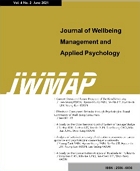 E-ISSN : 2586-6036
E-ISSN : 2586-6036
LEE, So-Hee
YUN, Yeo-Jin
CHOI, Soo-Young
JUNG, Min-Jae
KWON, Woo-Taeg
Abstract
Purpose: The purpose of this study is to reduce odor complaints by identifying problems with odor management at the site of the water regeneration center and researching odor management methods. Due to the high population density of Korea, sewage treatment facilities are adjacent to residential and industrial areas. According to previous studies, the main malodor-emitting facilities of sewage treatment facilities were preliminary treatment facilities (2,220 times), sedimentation basins (4,628 times), and sludge treatment facilities (9,616 times). Research design, data and methodology: Compound malodors and designated malodor-producing substances were collected from five site boundaries of the water regeneration center and analyzed according to the official methods to test malodor, and a total of two times (August and September 2020) were conducted. Results: As a result of the measurement, in the green area in front of the center office, compound malodors were detected at a maximum of 8 times and at least 3 times during the dawn time. As for the designated malodor-producing substances, 0.1ppm of ammonia was detected in the green area in front of the center office and the park golf course. This is within 15 times the maximum allowable emission level of compound malodors and within 1ppm of the maximum allowable emission level of ammonia. Conclusions: Even if the dilution rate of the compound malodors did not exceed the maximum allowable emission level, the odor could be recognized, and more research is needed in the future to establish effective reduction measures according to the subjective and individual and seasonal odor characteristics.
- keywords
- Sewage treatment facility, Water regeneration center, Odor removal, Odor complaint, Reduction measurement
- Downloaded
- Viewed
- 0KCI Citations
- 0WOS Citations













